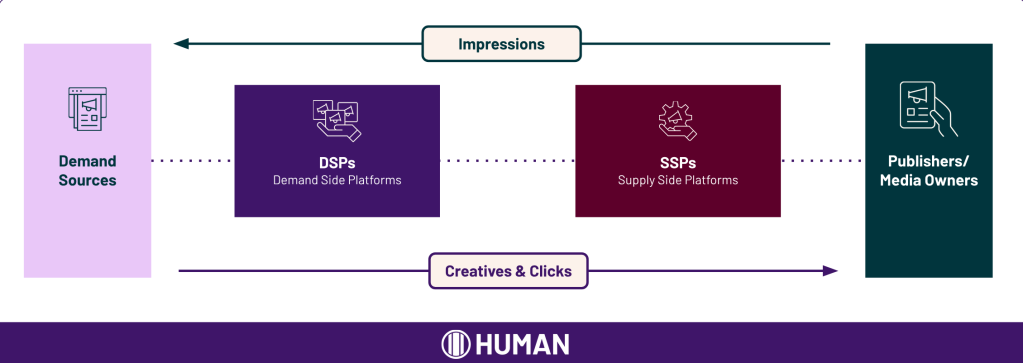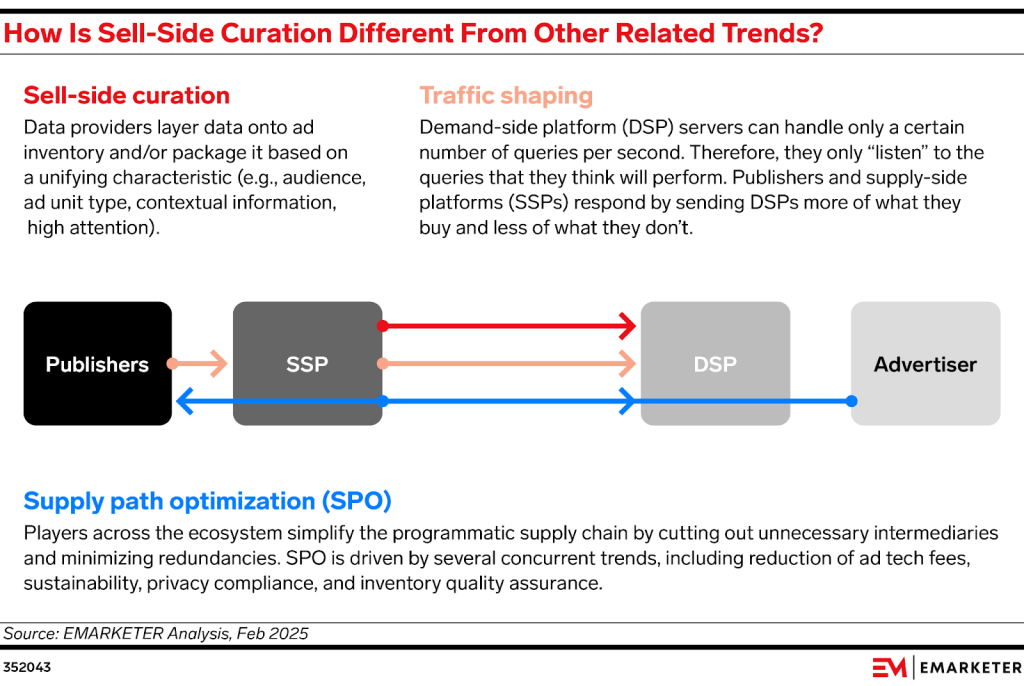In programmatic advertising, the supply chain between an advertiser’s bid and a publisher’s ad impression is often opaque – and that opacity can hide significant waste. Industry studies continue to reveal that a large share of programmatic spend never results in effective advertising. Inefficiencies often stem from hidden intermediaries, duplicative auctions, or fraud that can arise within complex supply paths. SSPs and DSPs are key partners in addressing these challenges by improving transparency and control.
The impact of these inefficiencies is quantifiable. According to the ANA’s Q1 2025 Programmatic Transparency Benchmark, only 41% of programmatic ad spend resulted in “quality” impressions (i.e. viewable, valid, non-fraudulent impressions) – meaning nearly 60% of spend was lost to non-quality inventory. Over one-third of open-programmatic ad spend goes to waste on low-quality or fake impressions, representing an estimated $21.6 billion in unrealized media value globally. In short, what advertisers don’t see in the supply path is costing them, at massive scale.
Key risks from opaque supply chains include:
- Yield leakage: Multiple middlemen (“ad tech tax”) mean only a fraction of spend reaches publishers as working media. Based on the ANA Transparency benchmark, about 40¢ of every $1 in programmatic spend actually makes it to real ads.
- Duplicate auctions: Overlapping supply paths cause advertisers to bid against themselves. An average publisher works with 10+ SSPs , meaning the same impression is often auctioned multiple times to one buyer – inflating CPMs through artificial competition and waste.
- Invalid traffic (IVT) exposure: Fraudulent or non-human impressions drain budgets and skew performance. Long, multi-hop paths tend to carry higher IVT risk; for example, emerging channels such as CTV have shown fraud rates 7× higher than the norm when inventory isn’t tightly curated.
Supply Path Optimization (SPO) for DSPs
A supply chain refers to the path a bid request or an ad impression takes between publisher and advertiser. Path length varies: short paths might be a direct publisher to SSP connection, while longer ones layer additional resellers or exchanges.
The SupplyChain Object (SChain) is the IAB’s standardized, declarative snapshot of who claims to have been involved in a given path.
This information can be used for Supply Path Optimization (SPO) – the decision logic on the demand side that evaluates and selects among those candidate paths. SPO ingests the reconstructed paths (from SChain plus other telemetry like price, latency, fraud/reputation, duplication signals) to decide which paths to bid on, prioritize, or drop.

Diagram illustrating a programmatic supply path (Publisher → SSP → DSP → Advertiser)
Taking a step back begs the question – why do longer or redundant paths matter? In most cases, every extra hop adds risk. Each additional hop increases complexity, which can create opportunities for inefficiency or fraud. This is where DSPs, supported by HUMAN, play a critical role in helping advertisers evaluate and optimize their paths.
- Longer paths = lower transparency: transparency diminishes with each hop.
- Redundant paths = duplicate auctions: advertisers might unknowingly bid multiple times on the same impression via different routes, driving up their own cost.
Convoluted supply chains make it easier for invalid or low-quality inventory to slip in, all while making it harder to discern media spend effectiveness.
HUMAN’s Senior Director of Product Management Justin Adler-Swanberg, explains the importance of transparency in programmatic advertising:
Effective Curation For SSPs
Curation allows SSPs to surface and package high-value inventory. To maximize its benefits, it needs to be accompanied by transparency. Without clear disclosure, there’s a risk that threat actors could misuse curation to obscure activity. HUMAN works alongside SSPs to ensure that curated supply maintains integrity and visibility. However, when done without transparency, it becomes a form of obfuscation threat actors can employ to hide their schemes.
By collapsing or suppressing its own or other layers in the SupplyChain Object, a longer, marked-up route can be made to look shorter or cleaner, hiding the curator’s involvement. That distortion undermines the visibility buyers rely on to reconstruct supply paths and perform accurate de-duplication and optimization.

An eMarketer piece notes that curation is gaining notoriety and scrutiny because, while it can theoretically simplify supply paths, curated inventory is not inherently clean and can mask what’s really happening under the hood.
How HUMAN Supports DSPs & SSPs
To combat potential threat actors that attempt to use curation as an obfuscation tool, HUMAN’s Compliance Dashboard provides end-to-end visibility into every supply-chain node. By doing so, SSP and DSP partners of HUMAN can strengthen trust with both buyers and publishers, showcasing the integrity of their inventory with holistic reporting. At HUMAN, we parse the OpenRTB SupplyChain Object (SCO) from each bid request and check every hop against the publisher’s ads.txt/app-ads.txt and the exchanges’ sellers.jsons.
When analyzing SCO data at HUMAN, we identified the below archetypes:
- Direct (1 node)
- Full clarity and transparency in ad purchasing power
- Short & Certified (2–3 nodes):
- Direct or private-deal paths
- Generally acceptable with low likelihood of ad fraud
- 2 can be considered “direct” if the first node is a trusted exclusive manager
- Long & Open (5+ nodes):
- Multi-hop open-market chains where incomplete SCOs are common
- Questionable inventory, as it’s been resold multiple times.
- Hybrid Bundles (3–5 nodes):
- Programmatic Guaranteed or PMP overlays combining certified and open hops.
- Mixed compliance – often passing some SCO checks but is reliant on transparency, leading to intermittent fraud/waste spikes.
Next Steps
Ultimately, improving programmatic supply paths is about creating stronger transparent partnerships. Improving programmatic supply paths requires collaboration across the ecosystem. Here are questions that SSPs and DSPs can use to assess and strengthen their approach with HUMAN’s support:
- As an SSP, how am I ensuring clarity in the SupplyChain Object and surfacing transparent, verifiable signals to partners? How am I highlighting the incremental value I bring to the path?
- As a DSP, how am I applying supply path optimization to prioritize efficient, fraud-free routes? How am I empowering advertisers with confidence in the transparency and quality of their media spend?
Connect with your HUMAN account team today to integrate supply chain intelligence features with your IVT protection strategy, or visit our Ad Fraud Defense page to learn more about our comprehensive solutions.